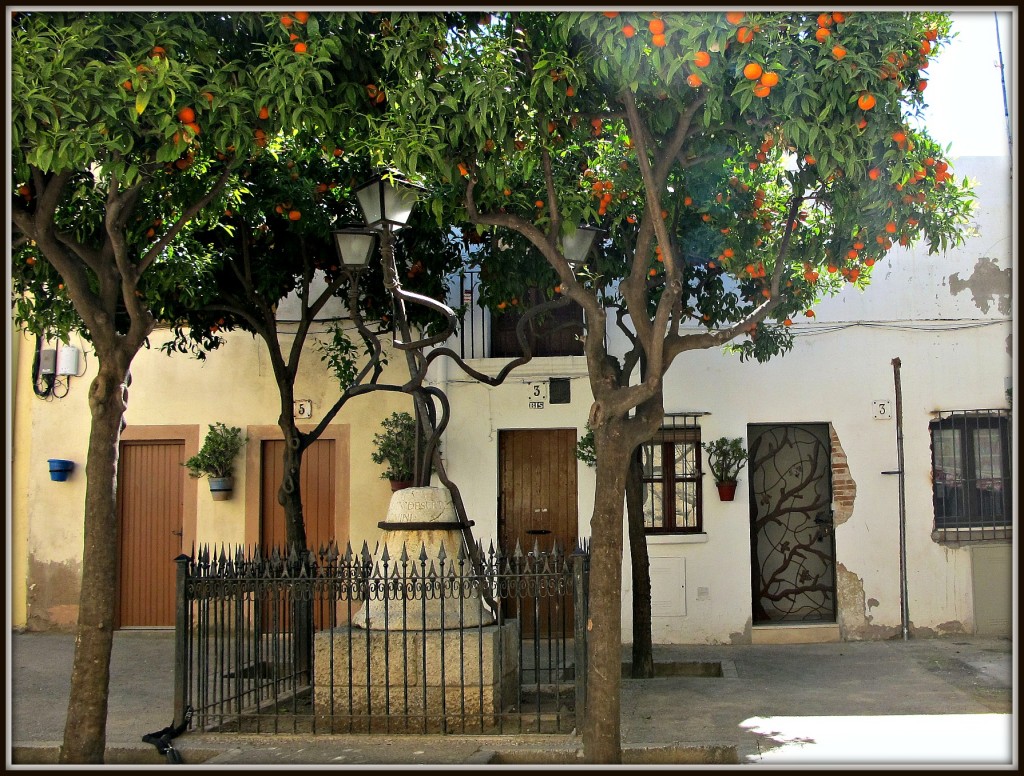At the ‘Plaça de Sant Joan’, right before the ‘Baixada del Roser’, there’s a sculpture after Joan Baptista. It was conceived by the architect Josep Maria Monravà, and built by the locksmith Antoni Casellas, in 1962. A mole holds a steel cross and three lamps. Four orange trees surround it.
It appears that Joan Baptista was both a philosopher and a social agitator who, at the time of the Emperor Tiberi, would dress up using animal leathers to condemn abuses of power. Some say he used to carry an austere life, and that he used to eat frugally. He must have been a sarcastic kind of man, because when asked: ‘So, who are you?’, he would answer ‘I am the voice crying out in the desert’, meaning he wasn’t taken into consideration as he should.
The other day, just in front of this sculpture, a group of people was listening to the explanations given by their guide. All of a sudden, one of the tourists, provably baffled by the Mediterranean fertility of the orange trees, interrupted him asking whether those oranges were suitable for eating. The guide, despite realizing –like the Saint– his pupils weren’t really paying enough attention, didn’t complain, and agreed on answering the question: ‘They make bitter. These orange trees make bitter. They are only good for jam…’.
Nowadays, Tarraco stones –which we share with the rest of humanity– are a very good reason to plot the foreigner’s erudite route. But one should be awake, since the current tourist is willing for something else: he looks for aromas, colours, and different flavours to the ones he’s already used to, and he’s aiming to find out about what the oranges at the ‘Plaça de Sant Joan’ taste like; whether they are any sweeter or more bitter than the ones at ‘Les Coques’. The guide must get a move on satisfying his audience’s interests, and please, using true and stimulating explanations, their wish of learning about every single thing around them, which has led all sorts of people to leave their homes for their holidays or retirement.
Who is then suitable for becoming a tourist guide? Who is properly qualified to inform visitors about our country’s history, natural, cultural and artistic heritage, costumes, and folklore? It is not easy: one should possess a certain degree (tècnic d’Empreses Turístiques o d’Empreses I Activitats Turístiques, diplomat en Turisme o en Empreses I Activitats Turístiques, grau superior d’Informació I Comercialització Turístiques o llicenciatura universitària) together with tourist guide authorisation issued by the ‘Generalitat de Catalunya’.
Candidates for the above mentioned authorisation should not just have a minimum art, history, traditions, museums and monuments knowledge, and an added political, economic, social and cultural consciousness regarding our country, but they should also, according to the Resolution EMO/1263/2012 approved bases, on June 14, master group dynamics, and be able to manage, advise and assist tourist groups.
And, of course, they must be able to listen to them. Because, sometimes, visitors’ questions highlight values otherwise omitted. The truth is that, since the day I decided to listen to a group’s guidance at the ‘Plaça de Sant Joan’, I am aware that all the orange trees garnishing the streets of our city, really deserve being admired, and that their oranges belong to a common heritage.
Isabel Baixeras Delclòs is lawyer
Translated by Artur Santos
Photo: ©Ivan Rodon




